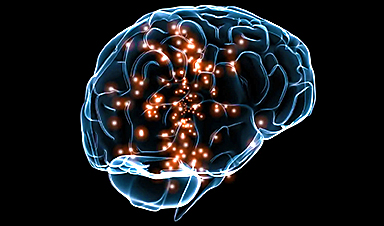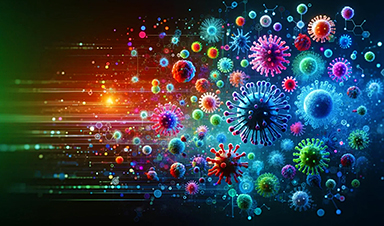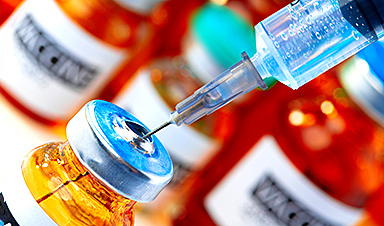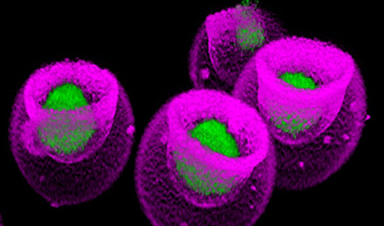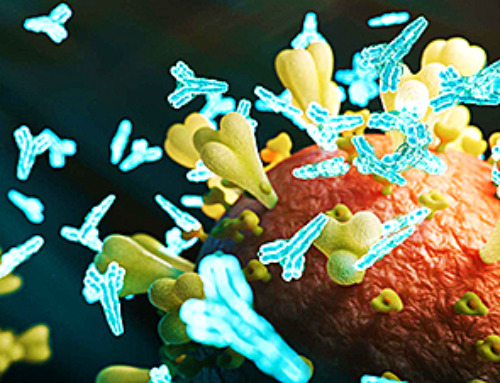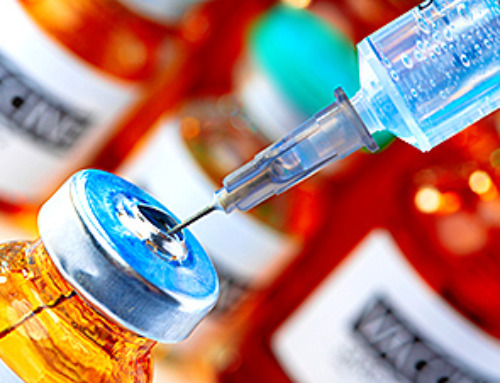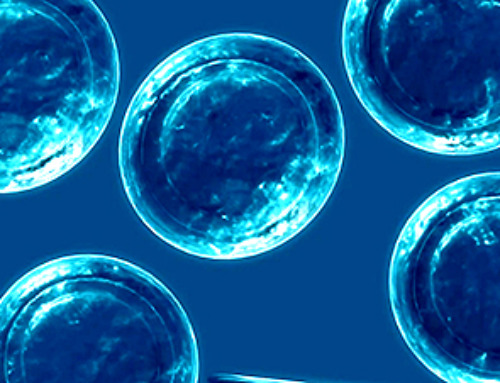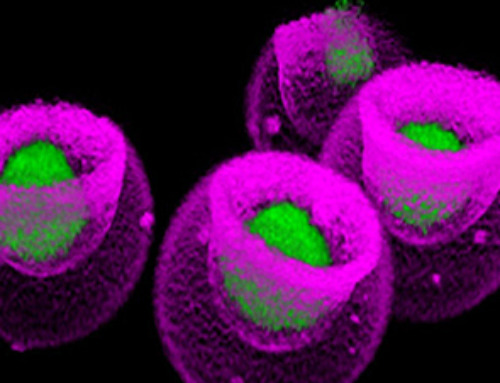Brain stimulation paired with a nose spray comprised of nanoparticles can increase recovery after ischemic stroke in an animal model, according to scientists from Xi’an Jiaotong-Liverpool University and other universities in China.
The nasal spray is a non-invasive means of delivering magnetic nanoparticles into the brain that, according to the research, can enhance the effects of transcranial magnetic stimulation (TMS).
TMS is a non-invasive brain stimulation technique that is now being utilized clinically or in clinical studies to cure neurological diseases such as stroke, Parkinson’s disease, Alzheimer’s disease, depression, and addiction.
After an ischemic stroke, rats administered a combination of nanoparticle and TMS treatment every 24 hours for 14 days had improved health, gained weight faster, and enhanced cognitive and motor abilities when compared to those treated with TMS alone.
During TMS therapy, an electrical current is passed through an electric coil positioned outside the skull, creating a magnetic field that activates brain cells by causing an additional electrical current inside the brain. However, the stimulation is often insufficient to penetrate far enough into the brain to reach the areas that require treatment.
From Impossible to Possible
The study solves a major question in nanomedicine: Is it possible to improve TMS by delivering nanoparticles into the brain non-invasively? Top experts have previously said that it was nearly impossible due to the blood-brain barrier. This physical barrier divides the brain from the rest of the bloodstream in the body.
The investigators overcame this by using a strong magnet near the head to guide the magnetic nanoparticles closer to the appropriate region.
We were able to overcome the blood-brain barrier and send enough nanoparticles into the brain to use in combination with TMS simulation to improve recovery from stroke. TMS devices are already used for the clinical treatment of neurological disorders but have severe limitations in terms of stimulation strength and depths of the brain they can penetrate.
Dr Gang Ruan, Study Corresponding Author, Xi’an Jiaotong-Liverpool University
Dr. Ruan says, “By non-invasively putting magnetic nanoparticles into the brain, we can amplify and enhance the TMS stimulation effects on neurons, making the treatment more effective. Showing it is possible to use nanoparticles in this way paves the way for medical applications of nanoparticles for other neurological disorders.”
Crossing Barriers
Since the iron oxide nanoparticles employed by the researchers are non-toxic and biodegradable, they are already being used to treat iron deficiency. The nanoparticles were also tweaked by the scientists by covering them with various non-toxic compounds.
The coating causes the nanoparticles to stick to the blood-brain barrier, increasing their chances of passing through it. Without this coating, the particles just bounce back from the barrier instead of crossing it. The modifications of the iron oxide particles also ensure that the nanoparticles can stick to the neurons and increase their responsiveness to TMS stimulation.
Dr Gang Ruan, Study Corresponding Author, Xi’an Jiaotong-Liverpool University
The safety of employing the modified nanoparticles in clinical studies must be evaluated, but they have the potential to be used in conjunction with TMS and other techniques such as brain imaging to acquire a better understanding of how the brain functions and enhance the treatment of neurological disorders.
Many scientists still think it is impossible to non-invasively send enough nanoparticles into the brain to affect brain function. Yet we have shown that it is possible. We combined the expertise on our team in four different disciplines, materials science, biophysics, neuroscience, and medical science, to push the boundaries of our knowledge and challenge what is currently thought in the field.
Dr Gang Ruan, Study Corresponding Author, Xi’an Jiaotong-Liverpool University
Journal Reference
Hong, Y., et al. (2022) Enhancing non-invasive brain stimulation with non-invasively delivered nanoparticles for improving stroke recovery. Materials Today Chemistry. doi.org/10.1016/j.mtchem.2022.101104.
News
Signs of Multiple Sclerosis Show Up in Blood Years Before Symptoms Appear
UCSF scientists clear a potential path toward earlier treatment for a disease that affects nearly 1,000,000 people in the United States. By Levi Gadye In a discovery that could hasten treatment for patients with multiple [...]
Advanced RNA Sequencing Reveals the Drivers of New COVID Variants
A study reveals that a new sequencing technique, tARC-seq, can accurately track mutations in SARS-CoV-2, providing insights into the rapid evolution and variant development of the virus. The SARS-CoV-2 virus that causes COVID has the unsettling [...]
No More Endless Boosters? Scientists Develop One-for-All Virus Vaccine
End of the line for endless boosters? Researchers at UC Riverside have developed a new vaccine approach using RNA that is effective against any strain of a virus and can be used safely even by babies or the immunocompromised. Every [...]
How Are Hydrogels Shaping the Future of Biomedicine?
Hydrogels have gained widespread recognition and utilization in biomedical engineering, with their applications dating back to the 1960s when they were first used in contact lens production. Hydrogels are distinguished from other biomaterials in [...]
Nanovials method for immune cell screening uncovers receptors that target prostate cancer
A recent UCLA study demonstrates a new process for screening T cells, part of the body's natural defenses, for characteristics vital to the success of cell-based treatments. The method filters T cells based on [...]
New Research Reveals That Your Sense of Smell May Be Smarter Than You Think
A new study published in the Journal of Neuroscience indicates that the sense of smell is significantly influenced by cues from other senses, whereas the senses of sight and hearing are much less affected. A popular [...]
Deadly bacteria show thirst for human blood: the phenomenon of bacterial vampirism
Some of the world's deadliest bacteria seek out and feed on human blood, a newly-discovered phenomenon researchers are calling "bacterial vampirism." A team led by Washington State University researchers has found the bacteria are [...]
Organ Architects: The Remarkable Cells Shaping Our Development
Finding your way through the winding streets of certain cities can be a real challenge without a map. To orient ourselves, we rely on a variety of information, including digital maps on our phones, [...]
Novel hydrogel removes microplastics from water
Microplastics pose a great threat to human health. These tiny plastic debris can enter our bodies through the water we drink and increase the risk of illnesses. They are also an environmental hazard; found [...]
Researchers Discover New Origin of Deep Brain Waves
Understanding hippocampal activity could improve sleep and cognition therapies. Researchers from the University of California, Irvine’s biomedical engineering department have discovered a new origin for two essential brain waves—slow waves and sleep spindles—that are critical for [...]
The Lifelong Cost of Surviving COVID: Scientists Uncover Long-Term Effects
Many of the individuals released to long-term acute care facilities suffered from conditions that lasted for over a year. Researchers at UC San Francisco studied COVID-19 patients in the United States who survived some of the longest and [...]
Previously Unknown Rogue Immune Key to Chronic Viral Infections Discovered
Scientists discovered a previously unidentified rogue immune cell linked to poor antibody responses in chronic viral infections. Australian researchers have discovered a previously unknown rogue immune cell that can cause poor antibody responses in [...]
Nature’s Betrayal: Unmasking Lead Lurking in Herbal Medicine
A case of lead poisoning due to Ayurvedic medicine use demonstrates the importance of patient history in diagnosis and the need for public health collaboration to prevent similar risks. An article in CMAJ (Canadian Medical Association [...]
Frozen in Time: How a DNA Anomaly Misled Scientists for Centuries
An enormous meteor spelled doom for most dinosaurs 65 million years ago. But not all. In the aftermath of the extinction event, birds — technically dinosaurs themselves — flourished. Scientists have spent centuries trying [...]
‘Mini kidneys’ reveal new insights into metabolic defects in polycystic kidney disease
Scientists at Nanyang Technological University, Singapore (NTU Singapore) have successfully grown 'mini kidneys' in the lab and grafted them into live mice, revealing new insights into the metabolic defects and a potential therapy for [...]
Decoding the Origin of Life: Scientists Solve Early Earth RNA Puzzle
Recent research illustrates how RNA molecules’ chemical characteristics might have played a crucial role in the development of complex life forms. How did complex life manage to evolve on the early, inhospitable Earth? Initially, [...]
